Perinatal and infant mental health programme: evaluability assessment
An evaluability assessment of the Perinatal and Infant Mental Health Programme Board was undertaken by NHS Health Scotland (now part of Public Health Scotland) to inform the development of an evaluation plan for the programme.
2 Programme logic model and prioritisation of the outcomes
2.1 Development of the programme logic model
The programme logic models were developed and agreed in collaboration with stakeholders during the first two workshops. Between the workshops, stakeholders were given the opportunity to provide written feedback about the proposed models to the Health Scotland team. For clarity, while it was recognised that perinatal mental health and infant mental health are closely linked, the logic models for perinatal mental health and infant mental health were developed separately. It should be noted that, due to time constraints and the fact that the programme is just beginning, only the right hand side of the logic models were developed i.e. the outcomes. Ideally the left hand side, the inputs including resources and activities of the programme will be developed as the programme develops. The task will be then to ensure that the proposed resources and activities are likely to produce the desired outcomes.
2.1.1 Perinatal mental health
The development of the perinatal mental health logic model was underpinned by the tiers of intervention that are outlined in Appendix 1. The tiers describe a spectrum of services and actions that are needed to address varying degrees of mental health concern. (7) Tiers 1-3 are taken from the Programme for Government 2018-19[3] and describe the different levels of mental health services for varying degrees of mental health illness. Tier 4-5 describe actions to identify women with perinatal health issues as early as possible, promote positive wellbeing, and prevent mental health problems. These additional tiers were agreed by the stakeholders attending the first EA workshop.
Figure 1 shows the short, medium and long term outcomes as they relate to perinatal mental health. In the each figure, the links between particular outcomes with the next level outcome are indicated by coloured arrows. All the outcomes that contribute to a particular outcome are shown by one colour of arrow. There is no significance in the choice of colour for any particular group. Each box is numbered to help discussions only and are not listed in any particular order.
2.1.2 Infant mental health
For the purposes of developing the infant mental health logic model, infant mental health was understood to be the same as healthy social and emotional development. Figure 2 shows the outcomes related to infant mental health.
2.1.3 Combined perinatal and infant mental health model
At the request of the stakeholders, the two logic models were combined. The resulting logic model is very complex - copies are available from the Perinatal and Infant Mental Health programme manager. Figure 3 brings the long term outcomes from both models together and shows their contribution to the Scottish Government's national outcomes.
2.2 Prioritisation of the outcomes
During the second EA workshop, the stakeholders were asked to prioritise the short- and medium-term outcomes for evaluation. Figure 4 brings the prioritised outcomes from both models together and shows the links between. The prioritised outcomes informed the development of the evaluation questions.
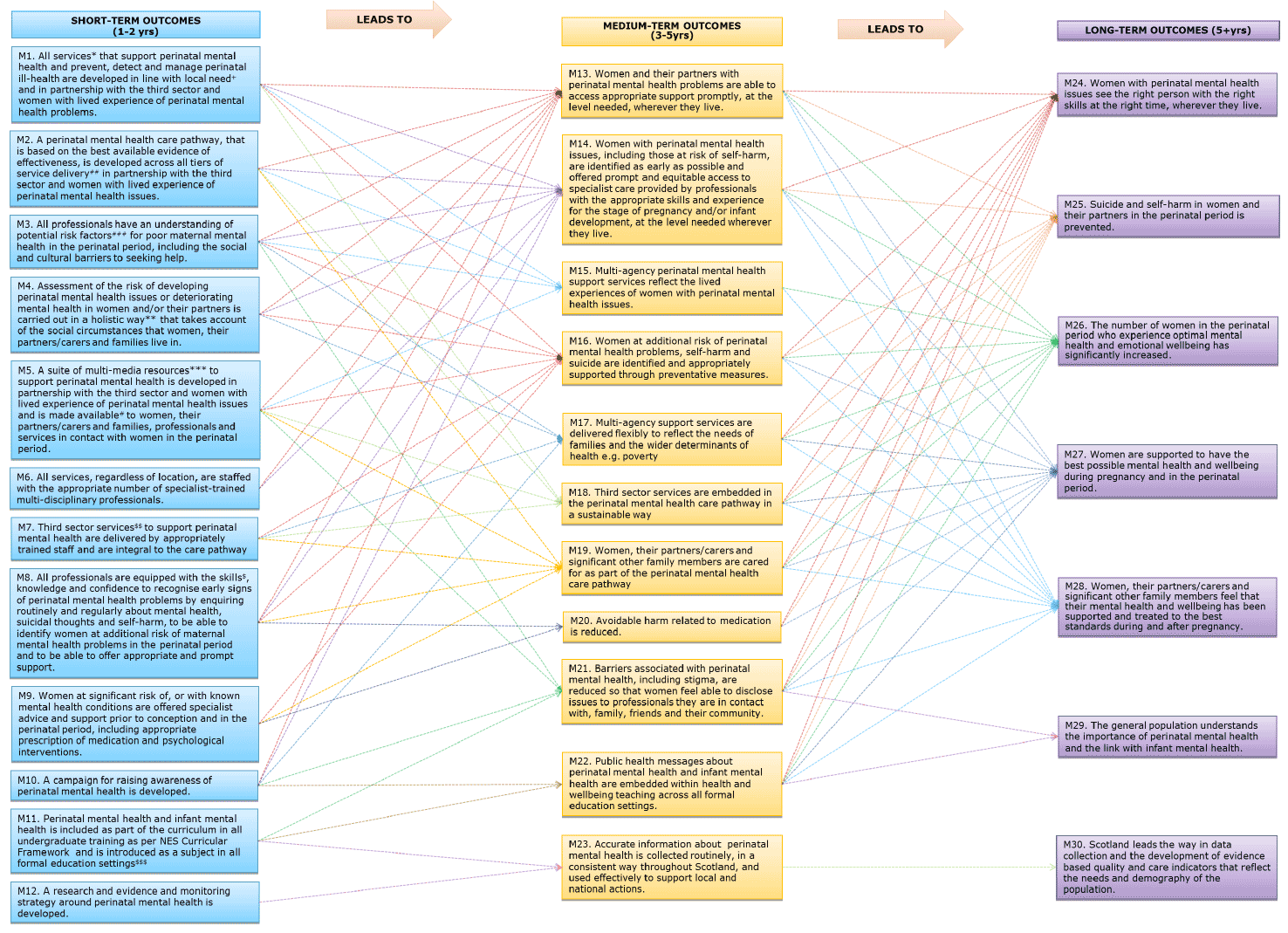
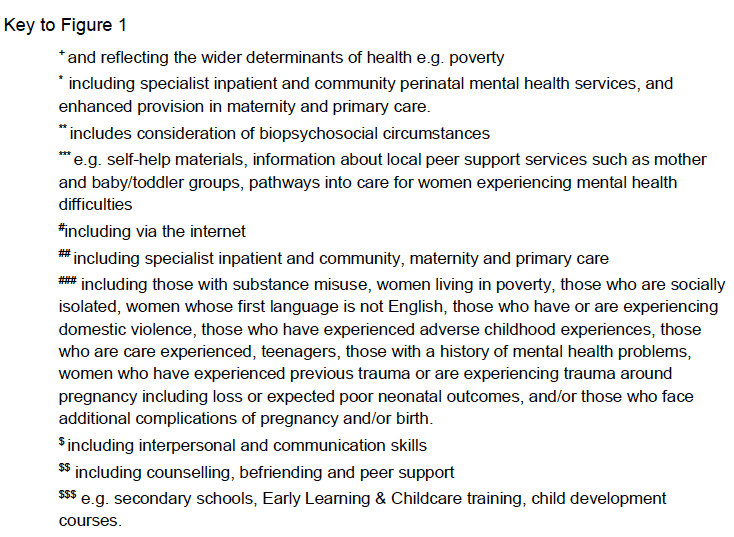
Figure description:
The Perinatal Mental Health model shows the short-term outcomes of 1 to 2 years, medium outcomes of 3 to 5 years and long-term outcomes of 5+ years. Each outcomes lead to the next set of outcomes.
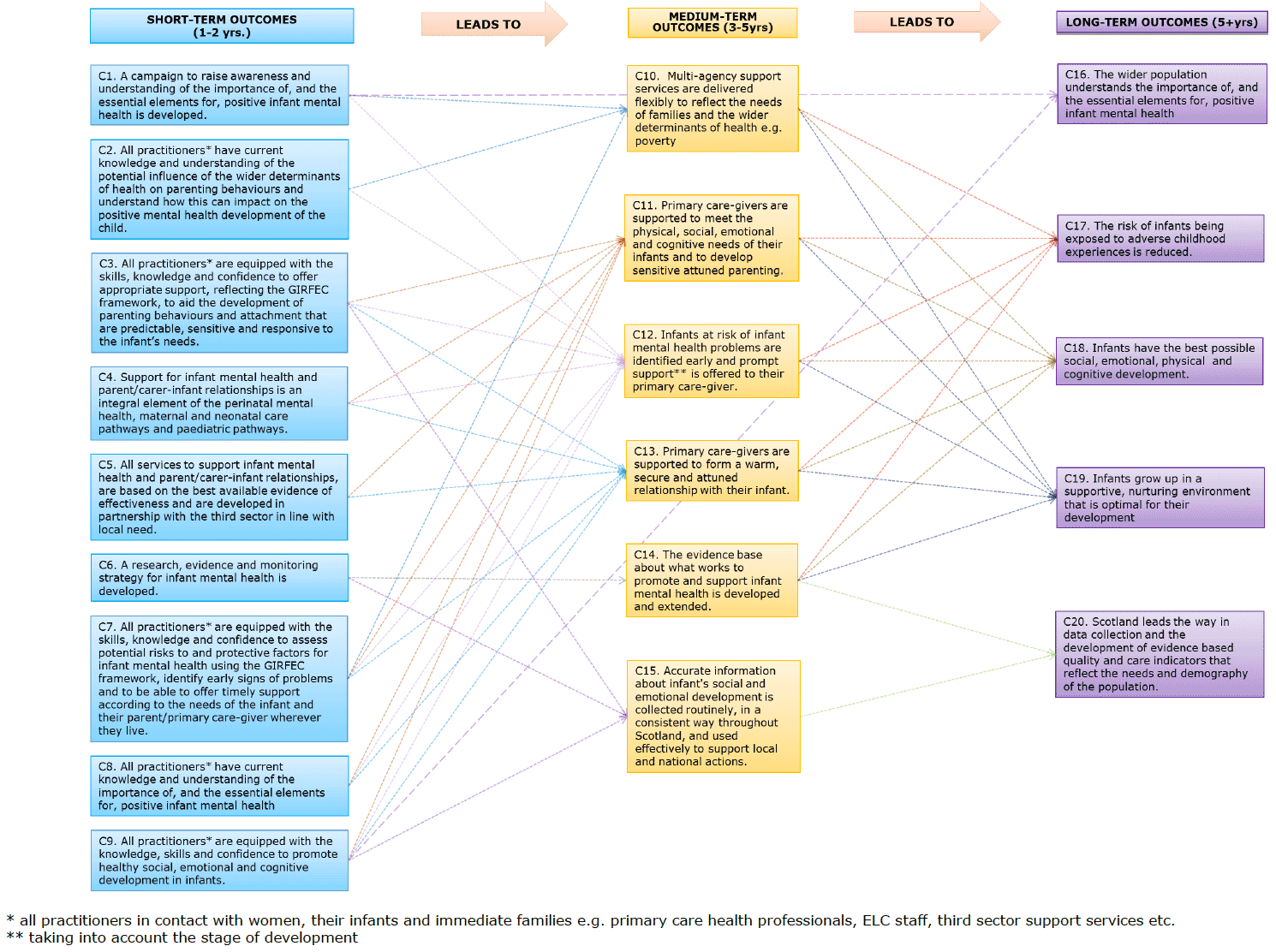
Figure description:
The Infant Mental Health Logic model shows the short-term outcomes of 1 to 2 years, medium outcomes of 3 to 5 years and long-term outcomes of 5+ years. Each outcomes lead to the next set of outcomes.
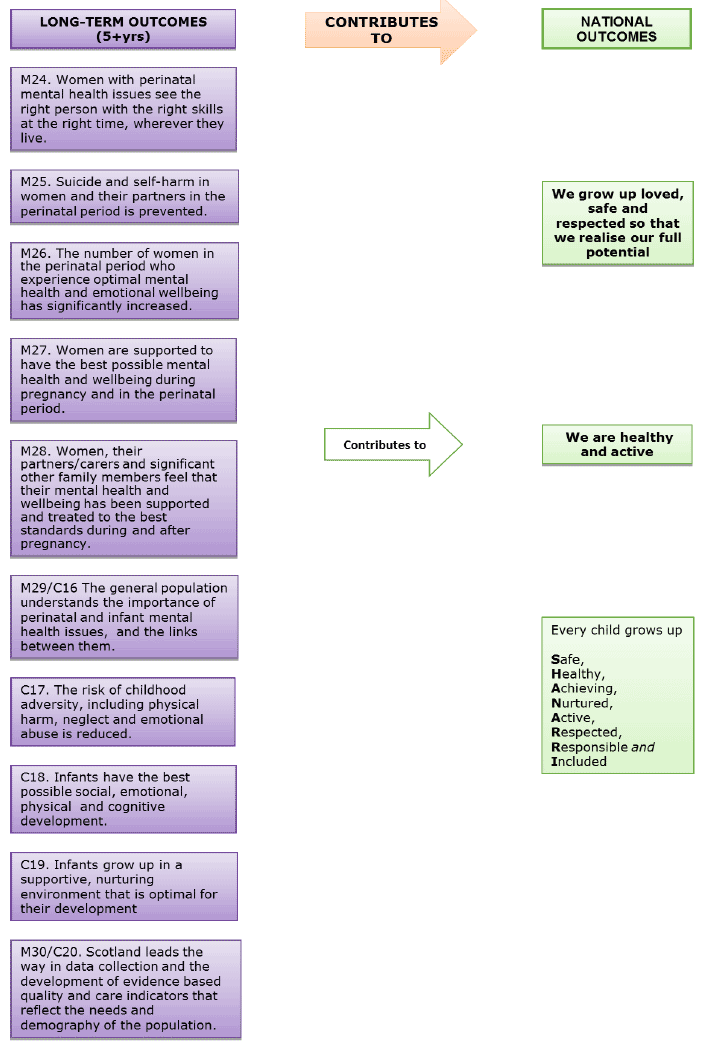
Figure description:
This information shows the long-term outcomes of 5+ years which contributes to the National Outcomes. We grow up loved, safe and respected so that we realise our full potential. We are healthy and active. Every child grows up safe, healthy, achieving, nurtured, active, respected, responsible and included.
The Scottish Government’s ‘Getting it right for every child’ (GIRFEC) approach supports children and young people so that they can grow up feeling loved, safe and respected. The eight SHANARRI wellbeing indicators describe the basic elements that all children and young people need to reach their full potential.
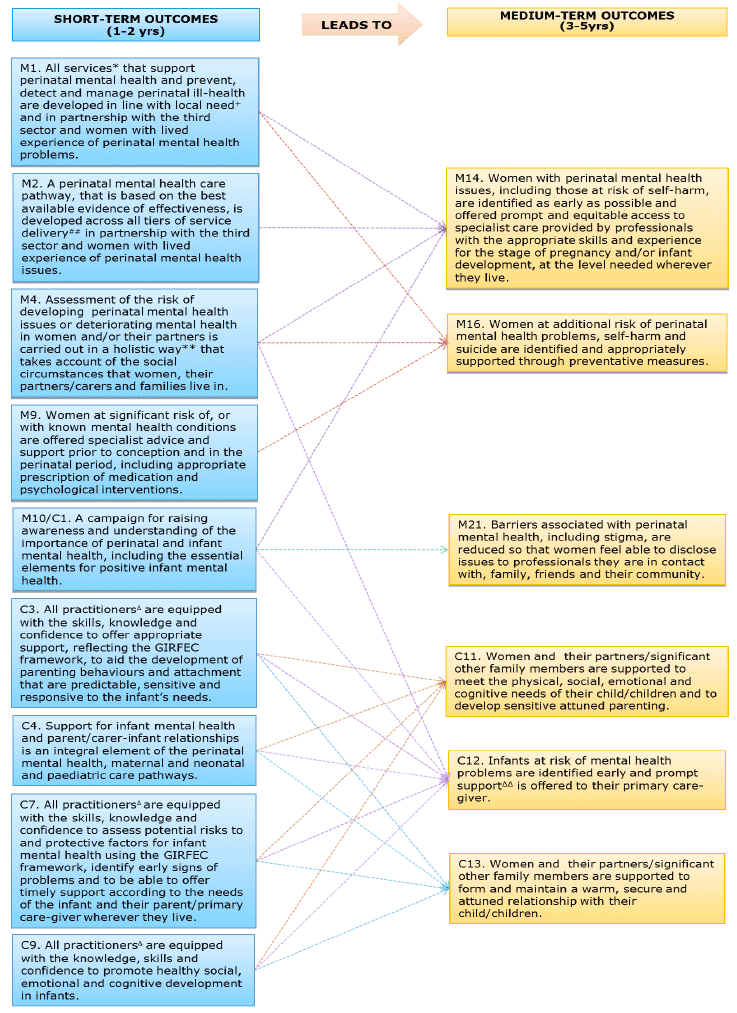

Figure description:
This information shows the short-term outcomes of 1 to 2 years which lead to the medium outcomes of 3 to 5 years that are prioritised by stakeholders for evaluation.
Contact
Email: pimh@gov.scot
There is a problem
Thanks for your feedback